
I set off by myself quite early as I had a full day ahead of me. I drove north from Takapuna up SH1 through Warkworth and Wellsford before turning west onto SH12 at Brynderwyn. I stopped at the Kauri Museum at Matakohe. This museum covers how the early settlers exploited the kauri forests of northern New Zealand. The trees grew tall, straight and massively thick. Their timber is hard with a nice grain pattern. As the trees grow tall before branching the wood is free of knots so it was ideal for many applications.
The museum staff advise visitors to head to the far end of the building and walk back looking at the exhibits. The displays start with some of the early machinery used in processing Kauri wood.
![]()
![]()
![]()
![]()
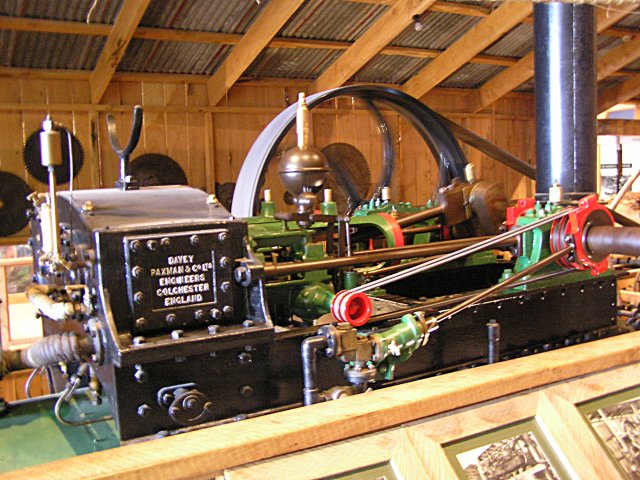
![]()
![]()
![]()
![]()
A steam engine from England used to power a sawmill
![]()
![]()
![]()
![]()
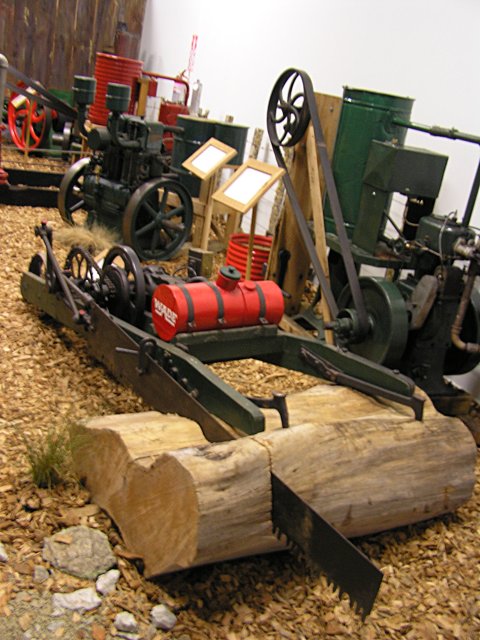
![]()
![]()
![]()
![]()
An early petrol driven saw. It wasn’t used for cutting down trees but for processing felled tree trunks
![]()
![]()
![]()
![]()
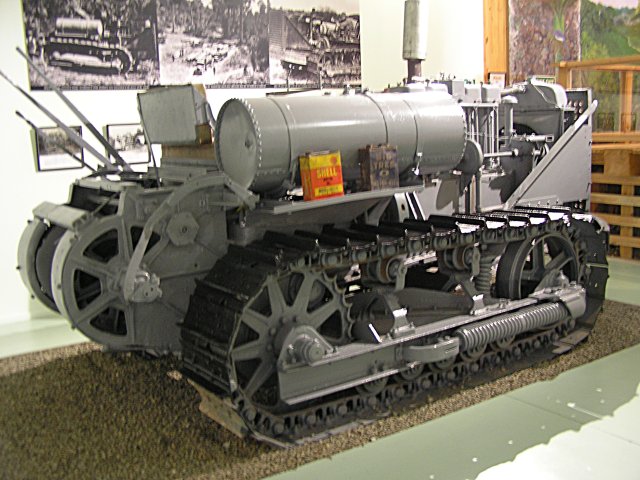
![]()
![]()
![]()
![]()
This was one of the first caterpillar tractors imported into New Zealand in the late 1920’s. It replaced teams of cattle that were used for hauling kauri tree trunks out of the forests to the sawmills
![]()
![]()
![]()
![]()
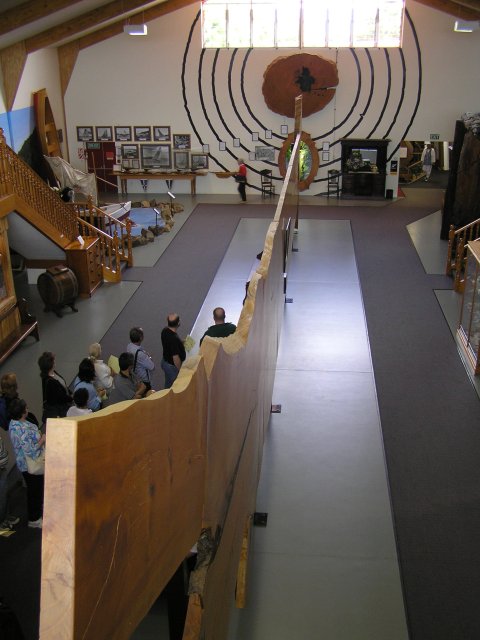
![]()
![]()
![]()
![]()
This is a 22 meter long slice through a kauri tree trunk. The wooden disc on the far wall is from the base of the tree. The concentric rings show the diameters of the trunks of several famous kauri trees. The largest kauri alive today is the third ring from the outside
Another room displays a large collection of gum from kauri trees. This is a resin which seeps out and seals any damage to the bark, preventing any rotting of the wood. The gum can build up into a lump which then falls from the tree. Prospectors used to collect the chunks of solid gum from around the bases of the trees. Kauri gum was used by the Maori people for cooking and lighting because it burns very easily. Europeans used it in a number of chemical processes, thinning paints and as a base for polishes. At the height of the gum trade in 1886 nearly 5000 tons were exported at a price of roughly 5p kilo (£3 a kilo in today’s prices). Prospecting must have been hard work for little reward although there was always the chance of finding a valuable chunk of gum amongst the normal small pickings.
From the kauri museum I carried along SH12 to Tokatoka Peak. This is a 180 meter high core of an ancient extinct volcano. Although it was a hard slog to the summit there was a fantastic 360° view from the top. I sat and rested up there for about a quarter of an hour before a swarm of flying insects drove me down.
![]()
![]()
![]()
![]()
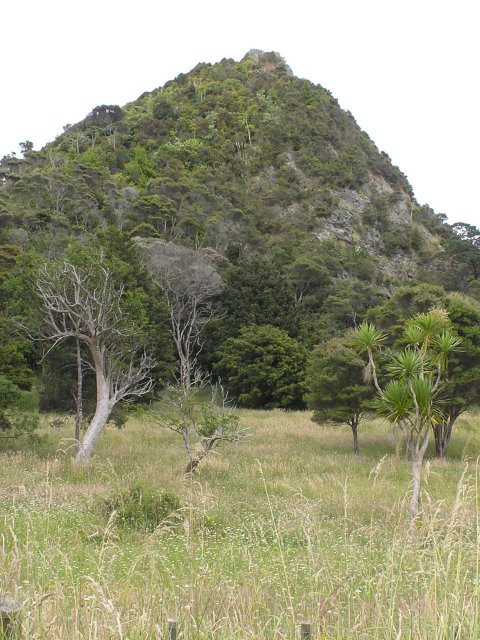
![]()
![]()
![]()
![]()
It’s a lot steeper than it looks
![]()
![]()
![]()
![]()
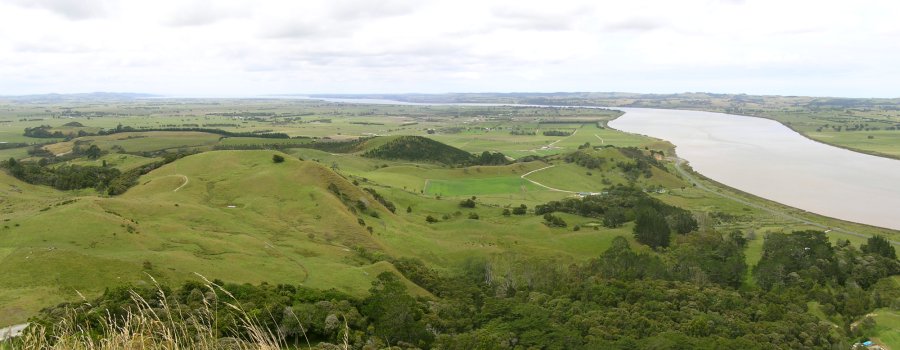
![]()
![]()
![]()
![]()
Panorama looking south from the top of Tokatoka Peak. The Wairoa Rivers stretches away to Kaipara Harbour, a large sheltered bay on the west coast
I drove further north to Dargaville where I bought some stuff for lunch and nipped into the tourist office which was open despite it being Boxing Day. I picked up some leaflets on the Waipoua Forest which was my next destination. I then drove to the Waipoua Forest and ate my lunch at a scenic lookout at the southern end of the forest.
![]()
![]()
![]()
![]()
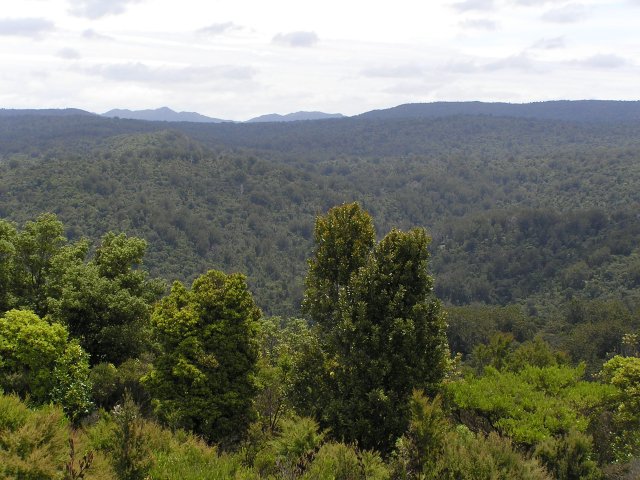
![]()
![]()
![]()
![]()
At the scenic lookout there’s a firewatchers tower. From here you can see a large part of the forest and east to the Tasman Sea
After lunch I drove a couple of miles north to the “Four Sisters”. This is a clump of four kauri trees growing together from a shared base. From a carpark a well maintained track leads through the forest to the kauri clump which is about 10 minutes walk. The path runs right around the Four Sisters allowing you to wander round them staring up into the forest canopy.
![]()
![]()
![]()
![]()
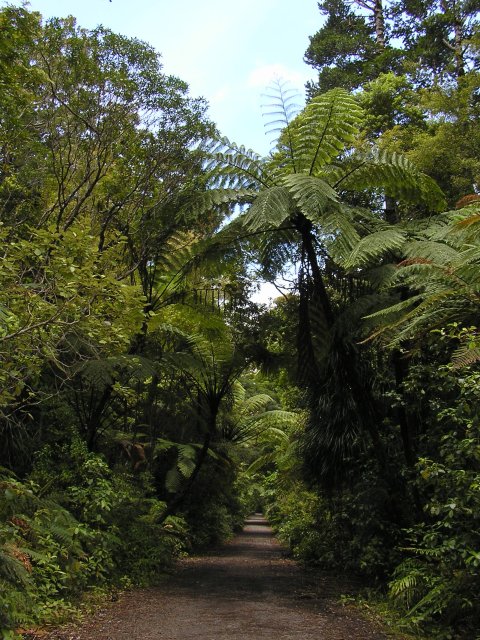
![]()
![]()
![]()
![]()
The path to the Four Sisters runs thorough the lush forest
![]()
![]()
![]()
![]()

![]()
![]()
![]()
![]()
The Four Sisters trunks aren’t really this curved; it’s an optical illusion from my camera
From the Four Sisters I drove a short distance further north to Tane Mahuta (“Lord of the Forest”). This tree is the largest living kauri in New Zealand. The girth of its trunk is nearly 14 meters and it is over 50 meters tall. The area around the tree was much busier and it was harder to appreciate the view of the tree. I soon continued my journey north to Kaitaia.
I followed State Highway 12 through the rest of the Waipoua forest. A bit further north it reaches the natural Hokianga harbour. I took the ferry across the harbour from the village of Rawene. I’d have liked some time for a look around the village but the ferry was about to depart when I arrived so I drove straight on to it.
![]()
![]()
![]()
![]()
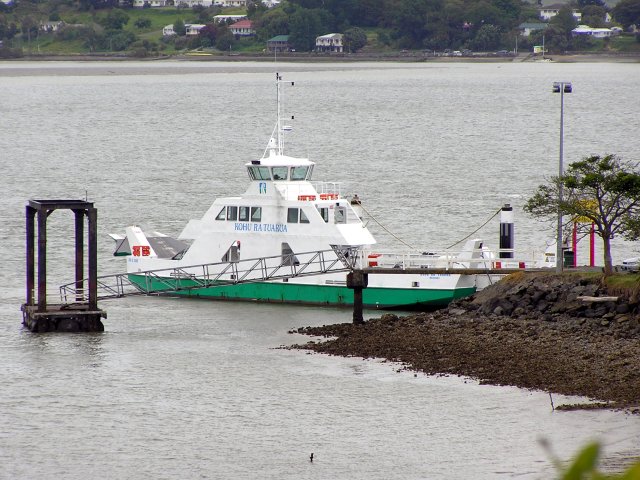
![]()
![]()
![]()
![]()
The ferry on the northern shore of Hokianga harbour near the village of Kohukohu
From the ferry I still had quite a drive further north to Kaitaia. I rejoined SH 1 before it twisted through the Raetea Forest. I was starting to feel quite tired from the long drive so I was happy to reach Kaitaia and the Northerner Motor Inn. The parents of my friend who lives in Auckland had recommended this as a good place to stay. I had another busy day ahead tomorrow so I had an early night.